Another Hectic Day in Healthcare, 2063
Health Affairs’ January 2013 issue has an article entitled “Primary Care Physician Shortages Could Be Eliminated Through Use Of Teams, Nonphysicians, And Electronic Communication.” Using simulation analyses, the authors argue that the looming primary care physician shortage predicted by the Association of American Medical Colleges is inaccurate, or at least avoidable. (Shortages of 45,000 to as high as 200,000 PCPs have been projected.)
Their new assumptions on changing demographics and alternative methods of care may make sense, but I wanted to sidestep suppositions. Thus, I went straight to the most reliable source I know: my dear old spirit guide, Madame Blavatsky. She immediately channeled one of the finest techno-futurists to ever pass over, Arthur C. Clarke! Though the spirit ethers wouldn’t allow a direct connection – something to do with a recent “Clarke-Asimov Spirit Treaty” – she was allowed to pass along a typed transcript of a short story written by Clarke about a day in the life of a primary care doc in the year 2063.
If “Ego” has nailed yet another future science prediction, it may bode well for the attractiveness of primary care to the next generation!
I relay the tale to you exactly as I received it:
—————————————————————————
I step from the autoshower, clean and fresh. It never ceases to amaze me just how perfectly the sensors know what water temperature I prefer each day. It’s never exactly the same day to day, according to the home central water readouts, but it always feels just perfect.
After daily ablutions are complete, I step into my cozy office just off the master bedroom to begin patient care. Today it’ll all be from my home, which I enjoy, though I admit that the live visits with patients in their homes are my favorite. Still, much of the work is so integrated and the reality of the virtual is so nearly real, it’s sometimes hard to know where live care and care-at-a-distance diverge. (The old term “telehealth” isn’t really used much anymore because it’s all so integrated.) Still, there’s something that’s just more deeply satisfying with live, in-person visits.
As I begin another day of virtual office work, I think of the old days when I used to actually have to log in using passwords and iris scans. The DNA sensors (which have since made those old, cumbersome, and not infallible security measures obsolete) are so seamless that I often forget that there ever was a security issue. Not that DNA sensors didn’t have their own security flaws in the early days, with hackers replicating DNA sequences as easily as they used to hack Java. But since the upgrade to DNA/RNA cross matching and the SensoCheck verification response system, there hasn’t been one successful breach in over a decade.
Before I set to business, I think of my own daily health SensoScan and, almost immediately, it completes before I finish settling into my chair. (I’ve always loved how SensoTools can activate with just a thought.) No major disruptions in vitals, heartscan, brainscan, organ function, or antibodies. Circulatory status fine, chemistries stable, and respiratory function remarkably unremarkable. Nucleic sequence mutations remain within acceptable limits. I do note one slight variation: some notable decrease in pigment in new hair growth. But, when you’re 79 – and since I opted out of the regeneration recoding – you gotta expect a little of that. I actually prefer the little bit of gray that now highlights my head and mutton chops. [A nod to his friend, Asimov? – Dr. Gregg]
As I turn my eyes toward the SensoScreen zone, the space above my desk becomes awash with 3D imagery of patients and their data updates. All is “green-and-go” on my patient panel except for the always curious Mrs. Sturnburner. She questions whether her SensoReads are accurate – again – because they don’t show any notable problems –again – despite her ongoing assertion that her bowels aren’t working as they should – again. I direct a personal note to her that these slight variations in intestinal consistency are a normal fluctuation and remind her – yet again – that dietary fluctuations cause routine changes in bowel output and peristaltic activity. At 124, she has had a hard time believing anything the SensoReads tell her. (Understandable, since she spent so much of life distrusting the frequently flawed data from the pre-SensoTools days.)
After scanning, I verify that all of the patient data, reports, notifications, and current SensoFeeds have been successfully transmitted via the SensoHIE. (How we ever survived in the days before health data was auto-transmitted and collated is beyond me.) The SensoHIESync shows full and intact data integrity with all communication lines green. Consultant feeds are clean and SensoPharm shows no outstanding needs or conflicts.
Speaking of SensoPharm conflicts, it seems sort of antiquated that there’s even a “Conflicts” alert anymore since all pharmaceuticals are either autoinduced, genomic redactions, or constructed on demand via in-home Senso3DPrinters. None of these can ever be initiated with any possible therapeutic conflict potential. Still, the “Conflicts” alert lingers as a holdover from the days before full Senso-integration. Sorta quaint, really.
All of a sudden, up pops a request from Jemma Thompson. It seems her five year old has swallowed one of the pieces from his recent Christmas present, the new “Al-Zirc Legos Master Planet Builder” set. The new alumina-zirconia nanocomposite-stabilized pieces don’t pick up well on SensoScan, so she’s a little freaked out even though the child seems fine. I dispatch one of the new VirtGo Hoverbots to her home; it arrives within minutes. Its robotic 3D ultrasound arm quickly locates the small round toy floating safely within the child’s gastric juices. I reassure Jemma that all will be fine and instruct her on how to adjust the SensoStool settings on her toilet to make certain that the toy’s passage is autorecorded. She smiles warmly, though I’m not sure if it’s for me or for the SensoStool scanner that keeps her at a comfortable distance from any manual fecal examination.
With the Hoverbot floating its way out of Ms. Thompson’s door, I relax in my chair and notice the time. I can barely believe that it’s nearly noon! The hour has just whizzed by. I think to myself that I’ll probably need to schedule an old-fashioned, real person, hands-on massage after such a hectic day.
Hopefully tomorrow will be less stressful.
—————————————————————————
From the trenches…
“All that we are is the result of what we have thought. The mind is everything. What we think, we become.” – Gautama Siddharta

Dr. Gregg Alexander, a grunt in the trenches pediatrician at Madison Pediatrics, is Chief Medical Officer for Health Nuts Media, an HIT and marketing consultant, and sits on the board of directors of the Ohio Health Information Partnership (OHIP).




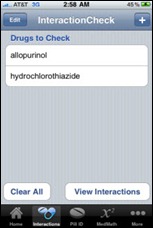
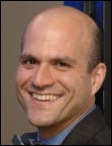

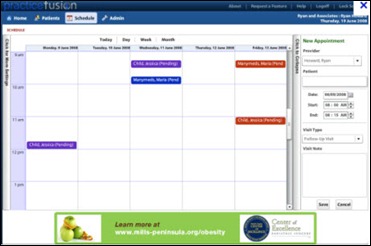


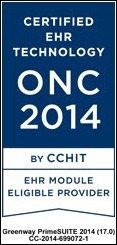


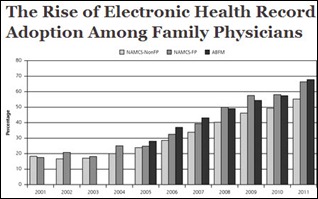
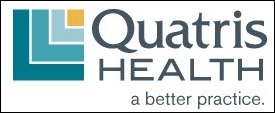



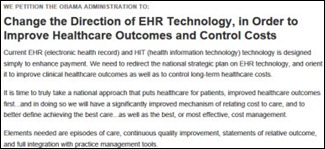





The article about Pediatric Associates in CA has a nugget with a potentially outsized impact: the implication that VFC vaccines…